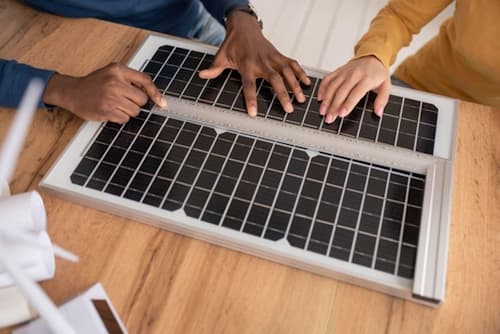With each passing day it is more frequent to see how residential buildings, companies and houses in our country have solar self-consumption systems installed for self-supply of electrical energy.
Among the reasons that lead users to opt for including this type of energy supply in their homes and companies, the following stand out; the volatility and increase in energy prices in the last year, the growing awareness of caring for the environment and the monthly savings provided by these devices thanks to the reduction in electricity consumption from the general network that they cause.
Given the boom in this type of technology, a large number of consumers ask themselves the following question; Is it a profitable option to install solar panels despite the investment involved?
The answer is clear, if it is a profitable alternative for consumers, thanks to the fact that the return on the investment made for the purchase of the equipment takes between seven or eight years under normal conditions, to which we should add that, currently, there are subsidies aimed at implementing these self-consumption models.
As of today, the approximate useful life of solar panels is around 25 or 30 years, taking into account this longevity and the amortization of the machinery in the mentioned period, we find ourselves with several years where we will be obtaining an economic and social benefit.
How to know the profitability of solar panels?
To know if a solar self-consumption equipment is profitable, the following determining aspects must be assessed:
The investment involved in the installation
The price to pay for the self-consumption equipment is really important to carry out this calculation, since the total price of the installation will be the total to be divided between the years of useful life of the machinery, although it is not the only factor that determines the profitability of the installation.
The savings that are generated annually will depend on more aspects, such as the energy consumed, the subsidies that the consumer can benefit from or the capacity of the installation.
Grants and aid available
As of today, there are a series of aids designed to reduce investment in self-consumption equipment, which translates into a lower outlay that, therefore, will be amortized more quickly.
Therefore, being able to take advantage of the different subsidies for solar panels will help reduce the necessary investment in these facilities.
Currently, there are various aids for solar panels; On the one hand, there are the European Next Generation funds, intended to encourage this type of facility by Europe, and the benefits on the IBI and the ICIO at the national level.
The size and capacity of the installation of solar panels
These two concepts are linked, since a larger dimension of solar panels will generate a greater amount of energy. The energy that the equipment is capable of generating is determined by:
The kWp that the installation presents (which is the amount of energy transformed by the installation when it works at full capacity).
The number of hours of sunshine that occur in the facility.
The orientation presented by the panels and their inclination.
In order to know the savings that these installations can bring about, the energy that the installations will generate must be known as accurately as possible.
Consumption that takes place in the home on a regular basis
In order to calculate the number of solar panels needed in an installation, the real energy consumption that takes place in the home must be known, since poor sizing, both in excess of panels and in their absence, will directly affect reducing the profitability of the installation.
The discharge of surpluses from the installation
Despite the fact that there are different models of solar self-consumption, the percentages of use of solar energy are never 100% on a regular basis.
The energy that the facilities transform and that is not consumed by the users can be poured into the general light distribution network, energy for which we will receive compensation, called surplus compensation.
The price that the companies will pay for this energy will be lower than the price paid to the general network for this service. In addition, it is not advisable to have an oversized installation for this purpose, since the surplus allows the bill to be reduced to zero, but the user will never be paid, rather the rest of the energy is transferred for free.
The price paid for electricity
The price at which we pay the electricity provided by the general network will also be decisive, since the same savings will not be obtained thanks to the self-consumption installation if one price or another is available.
Users who are paying a high price for energy will see greater savings, while those who
If they have an adjusted price for this, they will notice a smaller difference in their bills.
In addition, there are different alternatives to hire when you have this type of facility, so it will be interesting for users to investigate within the market in search of the best possible electricity rates.
However, regardless of the conditions, a solar panel installation will help save monthly on electricity supply bills.








